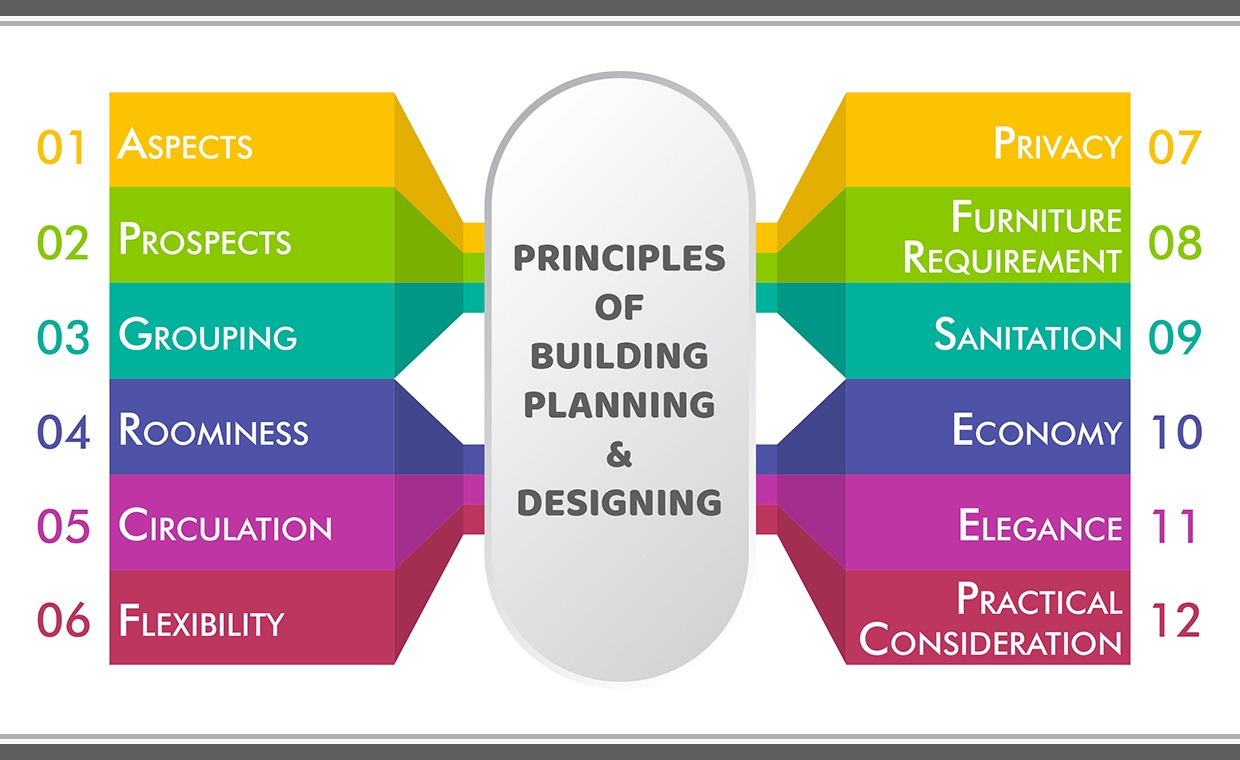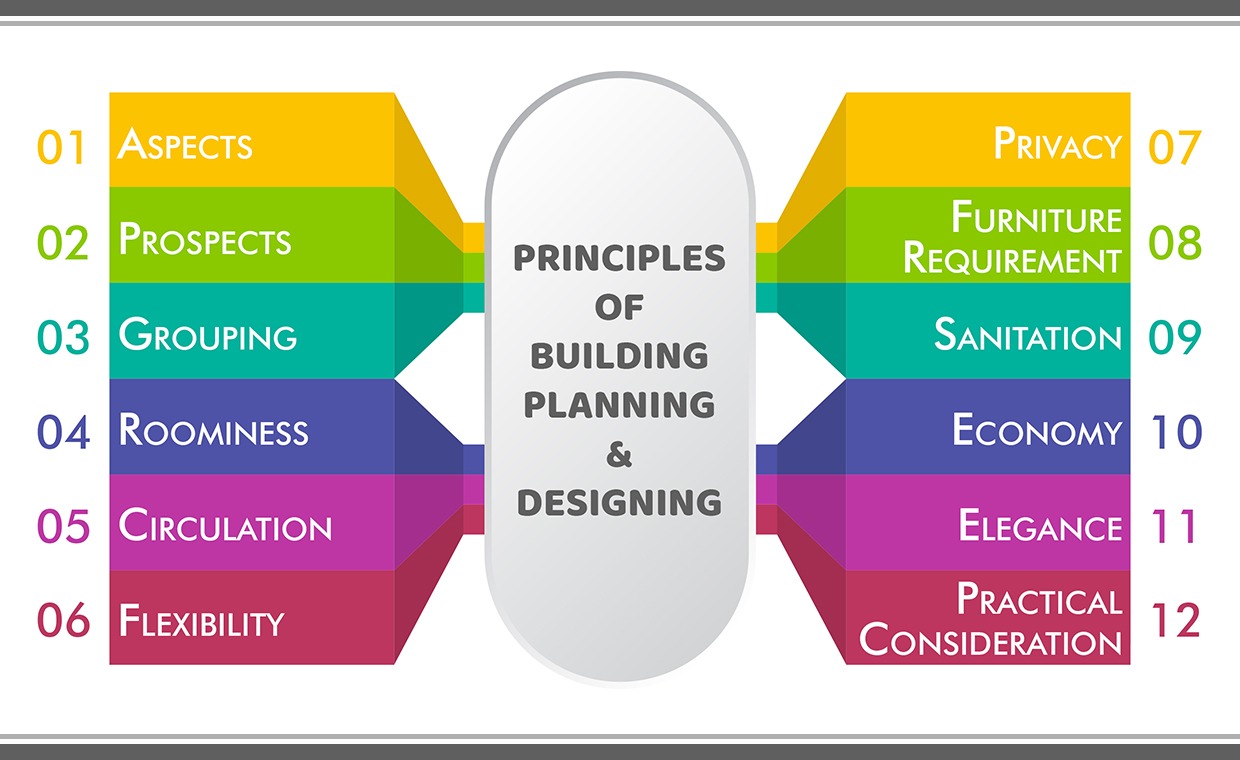Key Considerations In Planning Your Building Architecture
Building architecture is more than just the physical structure of a building. It’s an art that requires careful planning and execution to create a functional and aesthetically pleasing space. Whether you’re constructing a commercial building, a residential complex, or a public space, there are several key considerations that you need to keep in mind to ensure a successful project.
From the layout and design to the materials used and the energy efficiency of the building, every element plays a crucial role in the final outcome. In this article, we’ll explore some of the key considerations that you need to take into account when planning your building architecture, so you can create a space that is both functional and beautiful.
Key Considerations in Planning Your Building Architecture
Building architecture is a critical aspect of the construction process, and it is vital to consider various factors when planning it. The building’s design can affect its functionality, aesthetics, and overall experience. This article highlights ten key considerations to keep in mind when planning your building architecture.
1. Purpose of the Building
The purpose of the building is a critical factor to consider when planning its architecture. The building’s design must cater to the needs of its occupants, and it should align with the intended use. For instance, a commercial building’s architecture should differ from that of a residential building.
When designing a building, you should also consider the building’s future use. Flexibility in design can ensure that the building can accommodate changes in needs over time.
Benefits of considering the purpose of the building
– Ensures the building’s design aligns with its intended use
– Enhances user experience by catering to their needs
– Improves the building’s functionality and efficiency
2. Building Location and Site
The building’s location and site play a crucial role in its architecture. The site’s topography, orientation, and landscape can influence the building’s design. For instance, buildings in areas prone to natural disasters may require special design considerations.
When designing a building, you should also consider the surrounding environment. The building should blend in with the environment and complement the existing landscape.
Benefits of considering the building location and site
– Enhances the building’s design and aesthetics
– Improves the building’s functionality by catering to its surroundings
– Ensures the building complies with local regulations and codes
3. Building Materials and Sustainability
The building’s materials and sustainability are critical factors to consider when planning its architecture. The materials used can affect the building’s durability, maintenance, and overall aesthetics.
When selecting materials, it is essential to consider their environmental impact. Sustainable materials can reduce the building’s carbon footprint and promote environmental conservation.
Benefits of considering building materials and sustainability
– Improves the building’s durability and maintenance
– Enhances the building’s aesthetics
– Promotes environmental conservation and sustainability
4. Building Functionality and Efficiency
The building’s functionality and efficiency are essential considerations when planning its architecture. The building’s design should cater to the needs of its occupants and promote efficient use of space.
When designing a building, you should also consider its energy efficiency. Incorporating energy-efficient features can reduce the building’s operating costs and promote sustainability.
Benefits of considering building functionality and efficiency
– Enhances user experience by promoting efficient use of space
– Reduces operating costs through energy-efficient features
– Promotes sustainability
5. Building Safety and Security
The building’s safety and security are critical factors to consider when planning its architecture. The building’s design should incorporate safety features that promote the safety and well-being of its occupants.
When designing a building, you should also consider its security features. Incorporating security features can prevent unauthorized access and protect the building’s occupants and assets.
Benefits of considering building safety and security
– Promotes the safety and well-being of building occupants
– Protects the building’s assets from theft and damage
– Prevents unauthorized access to the building
6. Building Accessibility
The building’s accessibility is a critical factor to consider when planning its architecture. The building’s design should promote accessibility for all individuals, including those with disabilities.
When designing a building, you should also consider the building’s accessibility requirements. Incorporating accessibility features can promote the building’s usability and enhance user experience.
Benefits of considering building accessibility
– Promotes the building’s usability for all individuals
– Enhances user experience
– Complies with accessibility regulations and codes
7. Building Cost and Budget
The building’s cost and budget are essential considerations when planning its architecture. The building’s design should align with its budget, and the cost of construction should be manageable.
When designing a building, you should also consider the building’s long-term costs. Incorporating sustainable features can reduce operating costs and promote long-term cost savings.
Benefits of considering building cost and budget
– Ensures the building’s design aligns with its budget
– Promotes long-term cost savings through sustainable features
– Reduces the risk of cost overruns
8. Building Regulations and Codes
The building regulations and codes are critical factors to consider when planning its architecture. The building’s design should comply with local regulations and codes to ensure its safety, usability, and longevity.
When designing a building, you should also consider the building’s zoning requirements. Incorporating zoning requirements can ensure the building complies with local regulations and codes.
Benefits of considering building regulations and codes
– Ensures the building’s safety, usability, and longevity
– Complies with local regulations and codes
– Reduces the risk of legal and financial liabilities
9. Building Aesthetics and Branding
The building’s aesthetics and branding are essential considerations when planning its architecture. The building’s design should align with its brand and promote its image.
When designing a building, you should also consider its aesthetics. Incorporating unique design features can enhance the building’s aesthetics and promote its image.
Benefits of considering building aesthetics and branding
– Promotes the building’s image and brand
– Enhances the building’s aesthetics
– Differentiates the building from competitors
10. Building Maintenance and Upkeep
The building’s maintenance and upkeep are critical factors to consider when planning its architecture. The building’s design should promote ease of maintenance and reduce the need for frequent repairs.
When designing a building, you should also consider its maintenance requirements. Incorporating maintenance features can reduce the building’s maintenance costs and promote its longevity.
Benefits of considering building maintenance and upkeep
– Reduces the building’s maintenance costs
– Promotes the building’s longevity
– Enhances the building’s overall value
In conclusion, building architecture is a critical aspect of the construction process, and it is essential to consider various factors when planning it. By keeping these ten key considerations in mind, you can ensure that your building’s architecture aligns with its intended use, promotes sustainability and efficiency, and enhances user experience.
Frequently Asked Questions
What are the primary factors to consider when planning building architecture?
First and foremost, it’s important to consider the purpose of the building and the needs of its occupants. This includes factors such as the number of people using the building, the activities they will be engaged in, and any special requirements they may have. Additionally, it’s important to consider the environmental impact of the building and how it fits into the surrounding community. This includes factors such as energy efficiency, sustainability, and compatibility with existing architecture.
In addition to these considerations, it’s also important to think about the budget and timeline for the project. This will help ensure that the building is completed on time and within budget, while still meeting the needs of its occupants.
How can I ensure that my building is energy-efficient?
There are several key strategies for ensuring energy efficiency in building architecture. First, it’s important to consider the orientation of the building and its windows, as this can have a significant impact on the amount of sunlight and heat that enters the building. Additionally, using energy-efficient materials and technologies such as insulation, solar panels, and efficient HVAC systems can help reduce energy consumption and lower costs.
Another important consideration is the use of natural ventilation and lighting, which can help reduce the need for artificial lighting and air conditioning. Finally, incorporating green spaces and sustainable landscaping can help reduce the building’s environmental impact and create a more comfortable and healthy environment for its occupants.
What are some common mistakes to avoid when planning building architecture?
One common mistake is failing to consider the needs of the building’s occupants, such as their comfort, safety, and accessibility. Another mistake is failing to consider the surrounding environment and community, which can lead to a building that clashes with its surroundings or has a negative impact on the environment.
Other common mistakes include overdesigning the building, which can lead to unnecessary costs and complexity, and failing to prioritize sustainability and energy efficiency. It’s important to work with experienced architects and builders who can help avoid these and other common mistakes.
How can I ensure that my building is accessible for people with disabilities?
There are several key strategies for ensuring accessibility in building architecture. First, it’s important to consider the needs of people with disabilities throughout the design and construction process, including the placement of doors, ramps, and elevators.
Additionally, incorporating features such as wide doorways, grab bars, and accessible bathrooms can help ensure that the building is usable for people with a wide range of disabilities. It’s also important to consider the needs of people with sensory disabilities, such as providing visual and auditory cues in addition to written or spoken information.
Finally, it’s essential to comply with relevant accessibility standards and regulations, such as the Americans with Disabilities Act (ADA) in the United States. Working with experienced architects and builders who are familiar with these regulations can help ensure that the building is fully accessible and usable for all people.
How can I balance aesthetics and functionality in building architecture?
Achieving a balance between aesthetics and functionality is a key challenge in building architecture. One strategy is to focus on creating a building that is both visually appealing and functional for its occupants, rather than prioritizing one over the other.
This can involve incorporating design elements such as natural light, open spaces, and attractive materials, while also ensuring that the building is practical and efficient to use. Additionally, it’s important to work with experienced architects and builders who have a deep understanding of both the design and practical aspects of building architecture.
Ultimately, achieving a balance between aesthetics and functionality requires careful planning and attention to detail, as well as a willingness to make adjustments and revisions as needed throughout the design and construction process.
How To Think Like An Architect: The Design Process
In conclusion, planning your building architecture is not a task to be taken lightly. It requires careful consideration of various factors, such as the purpose of the building, the surrounding environment, and the needs of its occupants. By taking the time to carefully plan and design your building architecture, you can create a space that is not only functional but also aesthetically pleasing.
One important consideration in planning your building architecture is sustainability. A sustainable building design can help reduce energy consumption and minimize the impact on the environment. It can also help improve the health and well-being of its occupants. By incorporating sustainable features such as energy-efficient lighting, natural ventilation, and green roofs, you can create a building that is both eco-friendly and cost-effective.
Another key consideration in planning your building architecture is accessibility. A well-designed building should be accessible to all, regardless of their physical abilities. This requires careful attention to details such as ramps, elevators, and wider doorways. By ensuring that your building is accessible to everyone, you can create a space that is welcoming and inclusive to all.




Leave a Reply